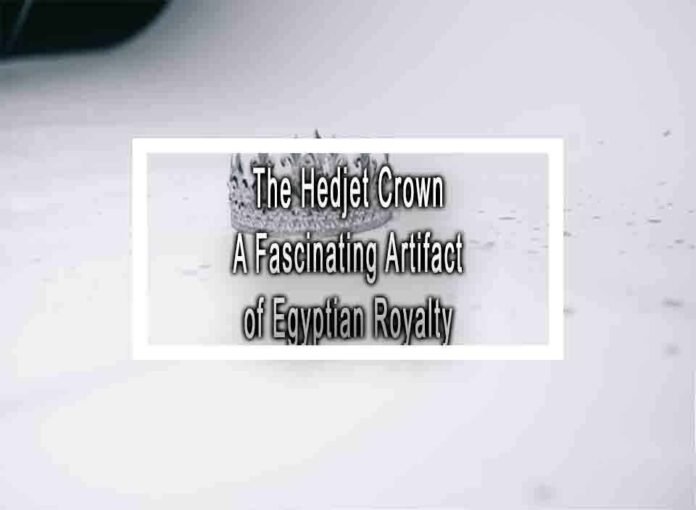The Hedjet Crown, also known as the White Crown or the Crown of Upper Egypt, is a prominent symbol of ancient Egyptian royalty and rulership. It represents the southern region of Egypt, Upper Egypt, and carries significant cultural and historical symbolism. Here’s an exploration of the symbolism and significance of the Hedjet Crown:
1. Geographic Symbolism:
- Upper Egypt: The Hedjet Crown symbolizes the southern region of Egypt, known as Upper Egypt, which is located upstream along the Nile River. This region was characterized by its natural borders and was symbolized by the color white.

- Red Crown: In contrast to the Hedjet Crown, Lower Egypt, the northern region, was represented by the Deshret Crown, also known as the Red Crown. The two crowns were often combined to symbolize the unification of Egypt.
2. Royal Authority and Unification:
- Pschent Crown: The pharaohs of ancient Egypt frequently wore a combined crown called the Pschent, which incorporated both the Hedjet Crown and the Deshret Crown. This amalgamation represented the unification of Upper and Lower Egypt under the rule of the pharaoh, signifying the monarch’s authority over the entire country.
3. Symbol of Sovereignty:
- Authority in Upper Egypt: When worn independently, the Hedjet Crown represented the pharaoh’s authority and rulership over Upper Egypt. It symbolized the king’s role as the lord of the south and protector of the region.
- Goddess Nekhbet: The Hedjet Crown is often associated with Nekhbet, the vulture goddess and protector of Upper Egypt. Nekhbet was considered a patron deity of pharaohs, and her association with the Hedjet Crown reinforced the ruler’s divine right to govern.
4. Artistic Representation:
- Depiction in Art: The Hedjet Crown is frequently depicted in ancient Egyptian art, statues, hieroglyphs, and temple reliefs, where it adorns the heads of pharaohs. Its distinctive tall, conical shape and color make it instantly recognizable.
5. Modern Interpretations:
- Cultural and Historical Symbolism: The Hedjet Crown serves as a symbol of ancient Egyptian history, culture, and the enduring legacy of the pharaohs. It continues to be used today in various contexts as a representation of Egypt’s rich heritage.
In summary, the Hedjet Crown is a compelling artifact of ancient Egyptian royalty, signifying the pharaoh’s authority over the southern region of Upper Egypt. It underscores the monarch’s divine right to rule and serves as a powerful emblem of the unification and sovereignty of Egypt. As an enduring symbol of Egypt’s remarkable civilization, it remains an iconic representation of the nation’s storied past.











